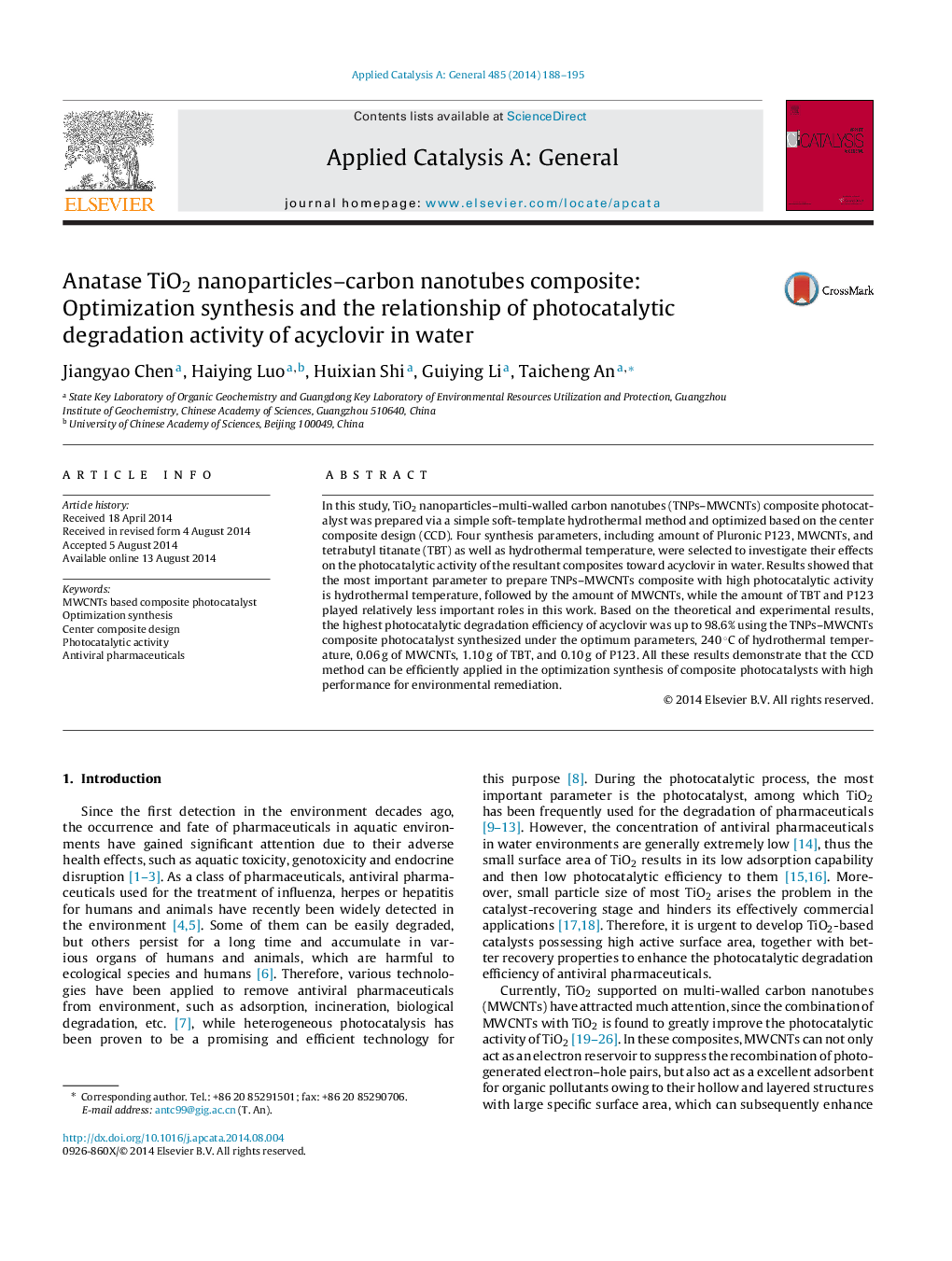| Article ID | Journal | Published Year | Pages | File Type |
|---|---|---|---|---|
| 39567 | Applied Catalysis A: General | 2014 | 8 Pages |
•Synthesis of TiO2 nanoparticles–MWCNTs composites by multiple variable method.•Photocatalytic degradation efficiency was optimized for the acyclovir degradation.•Optimum synthesis parameters were predicted by center composite design method.•Hydrothermal temperature was found to be the most important synthesis parameter.
In this study, TiO2 nanoparticles–multi-walled carbon nanotubes (TNPs–MWCNTs) composite photocatalyst was prepared via a simple soft-template hydrothermal method and optimized based on the center composite design (CCD). Four synthesis parameters, including amount of Pluronic P123, MWCNTs, and tetrabutyl titanate (TBT) as well as hydrothermal temperature, were selected to investigate their effects on the photocatalytic activity of the resultant composites toward acyclovir in water. Results showed that the most important parameter to prepare TNPs–MWCNTs composite with high photocatalytic activity is hydrothermal temperature, followed by the amount of MWCNTs, while the amount of TBT and P123 played relatively less important roles in this work. Based on the theoretical and experimental results, the highest photocatalytic degradation efficiency of acyclovir was up to 98.6% using the TNPs–MWCNTs composite photocatalyst synthesized under the optimum parameters, 240 °C of hydrothermal temperature, 0.06 g of MWCNTs, 1.10 g of TBT, and 0.10 g of P123. All these results demonstrate that the CCD method can be efficiently applied in the optimization synthesis of composite photocatalysts with high performance for environmental remediation.
Graphical abstractFigure optionsDownload full-size imageDownload high-quality image (244 K)Download as PowerPoint slide
